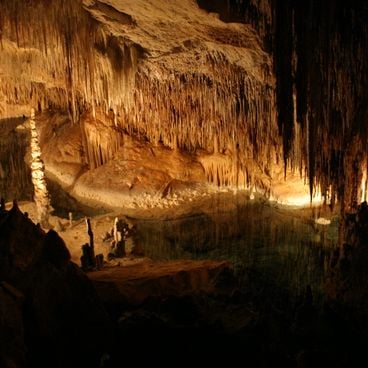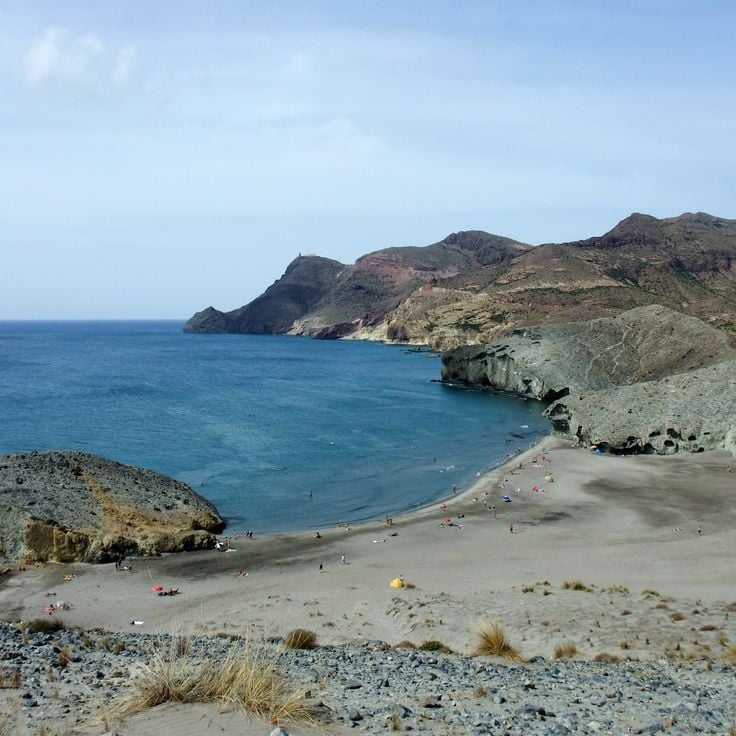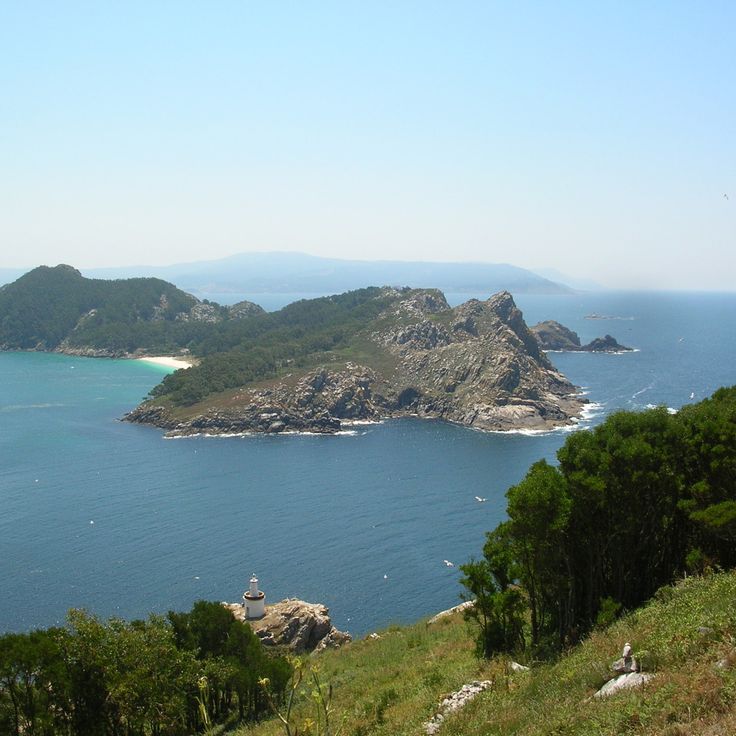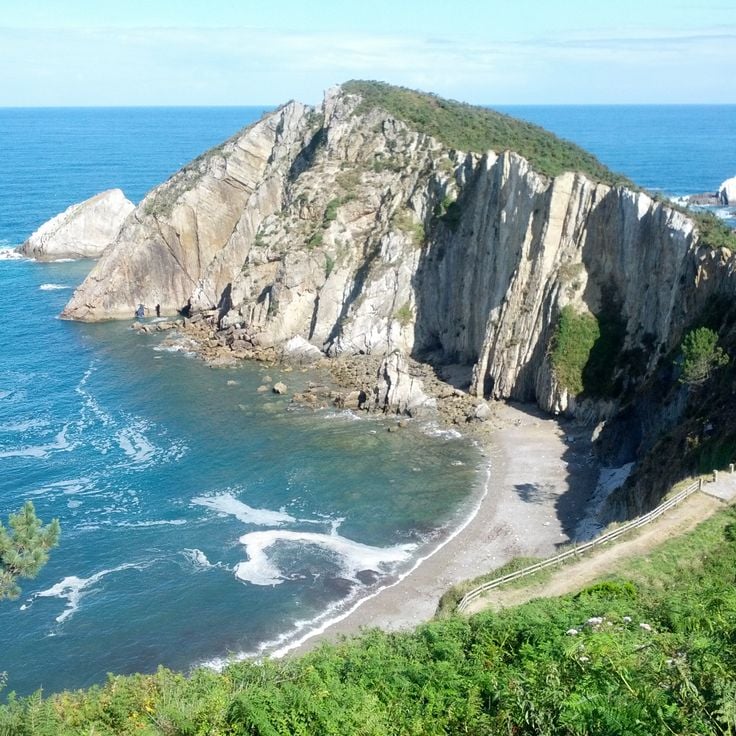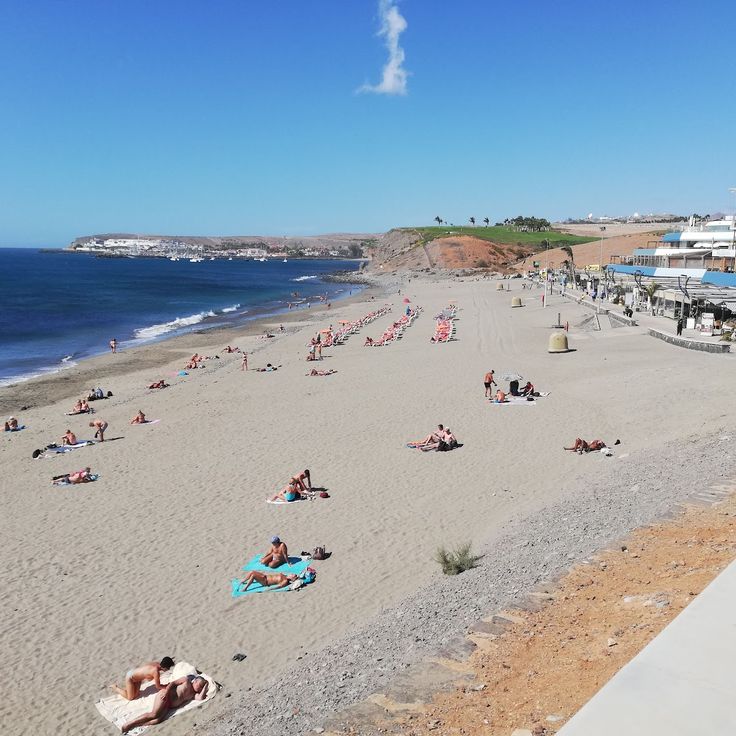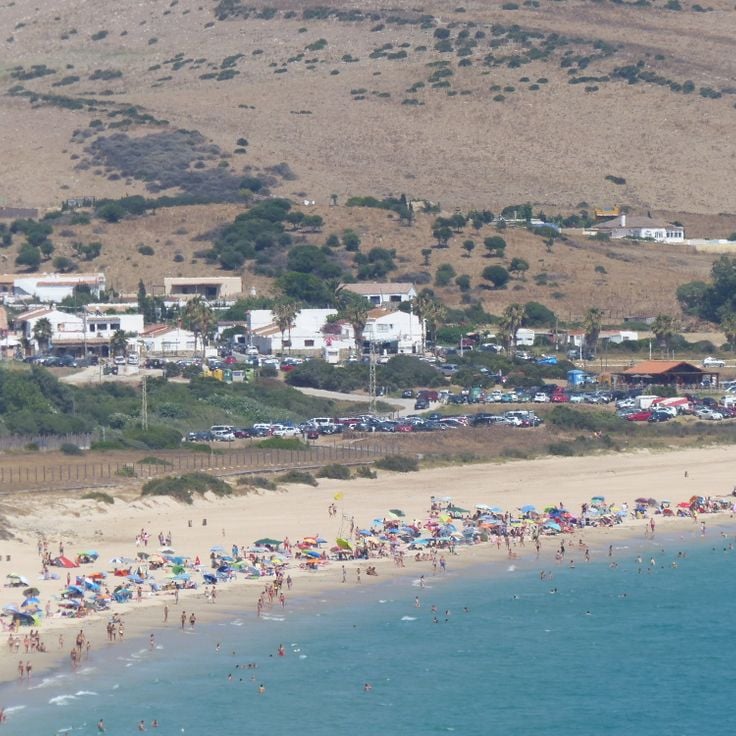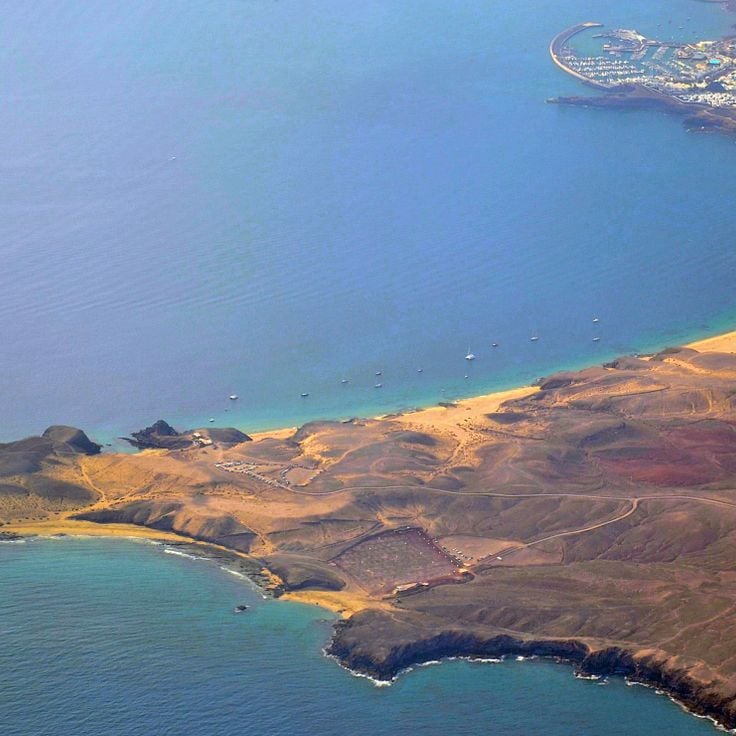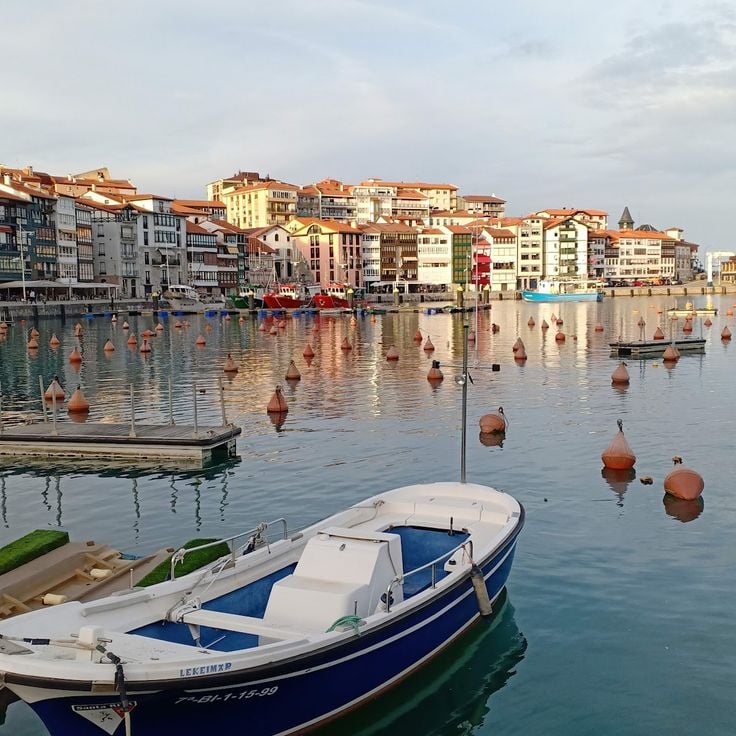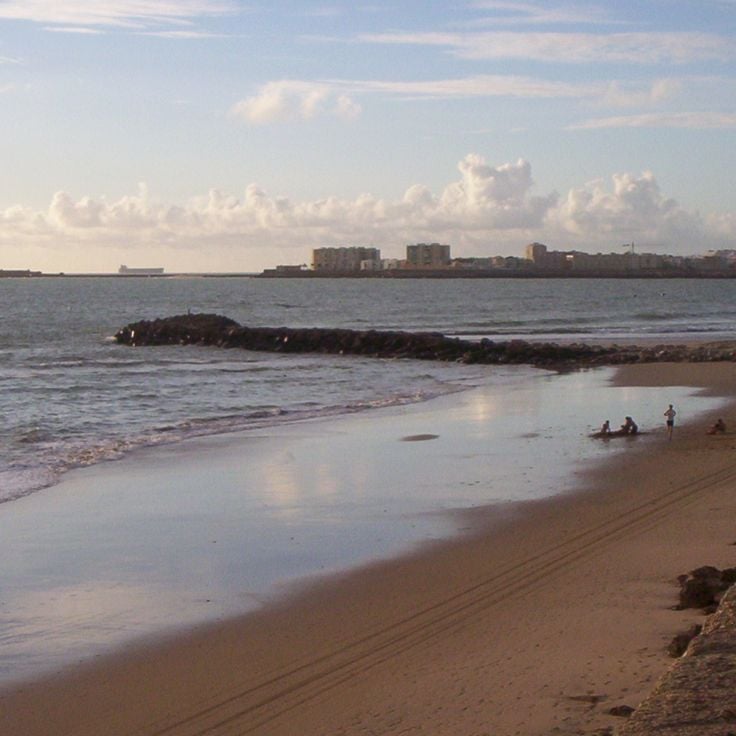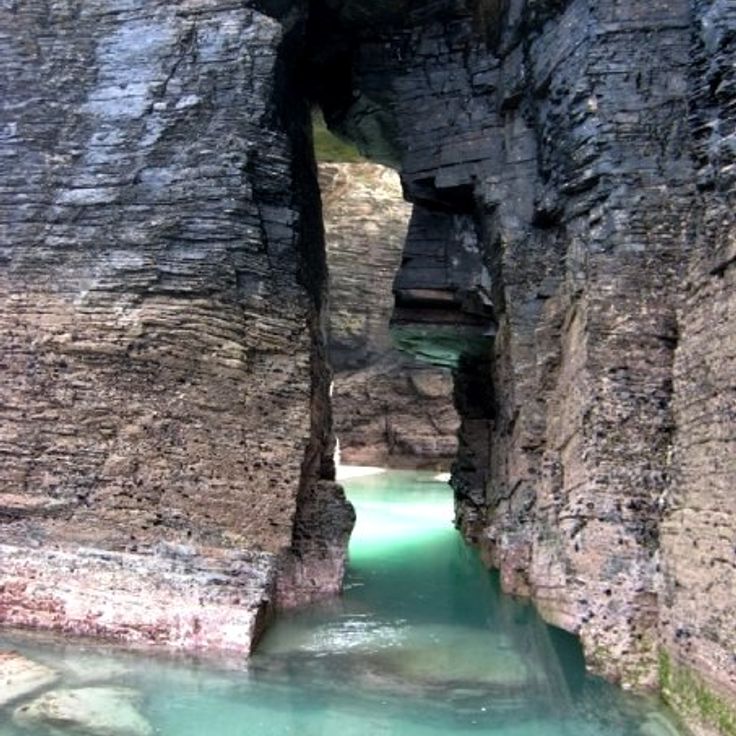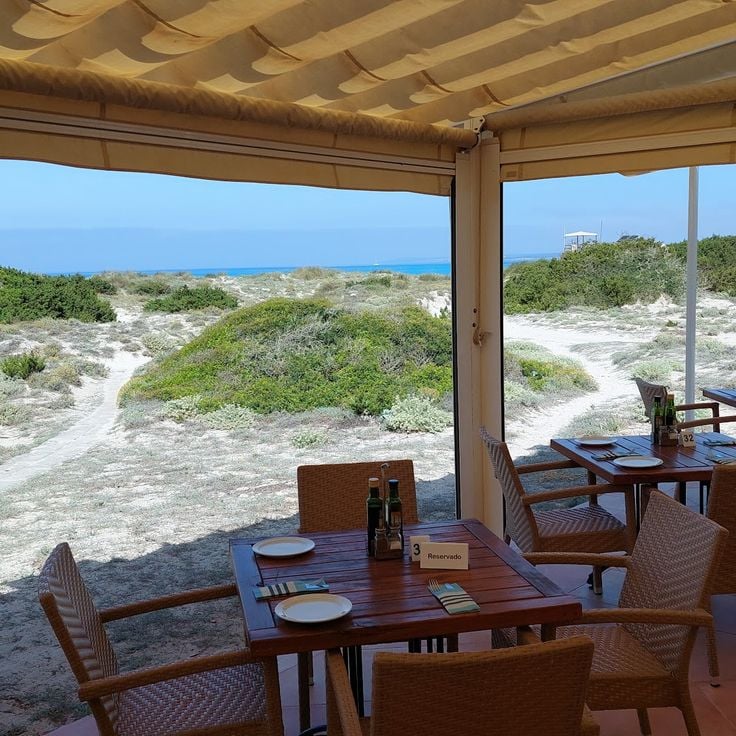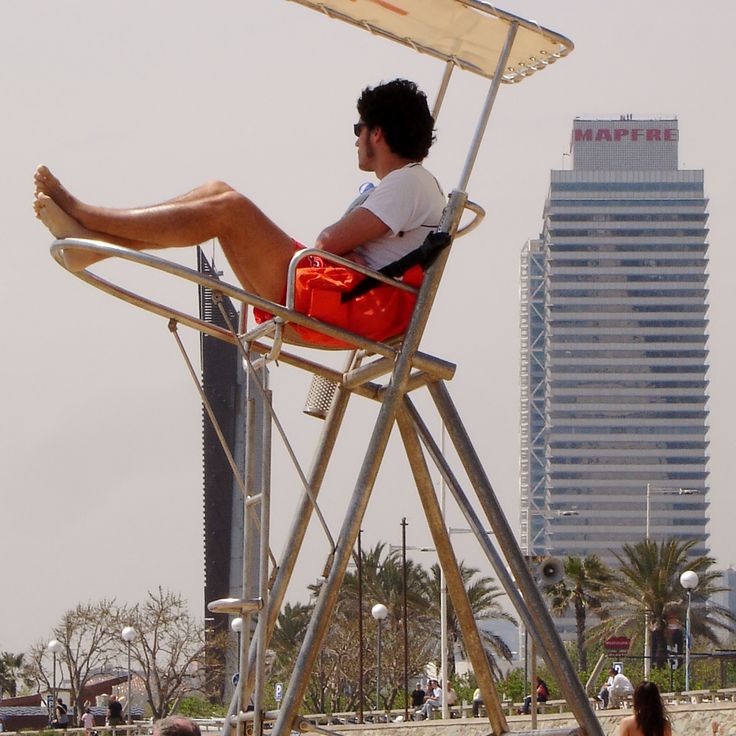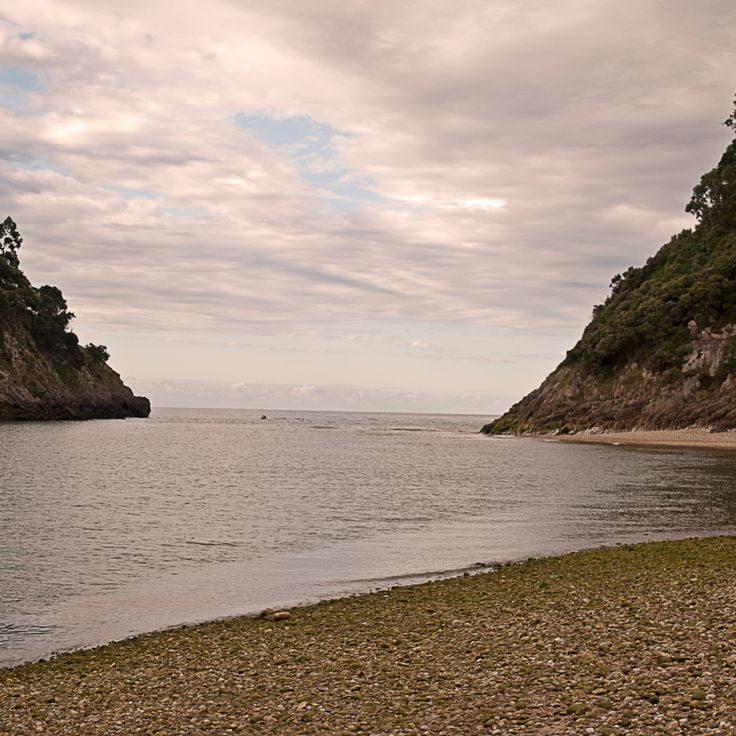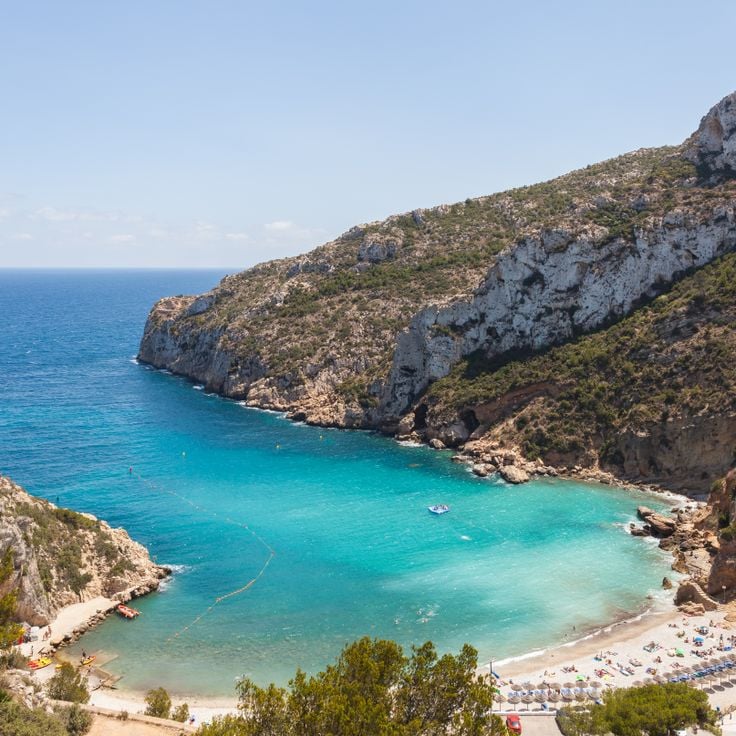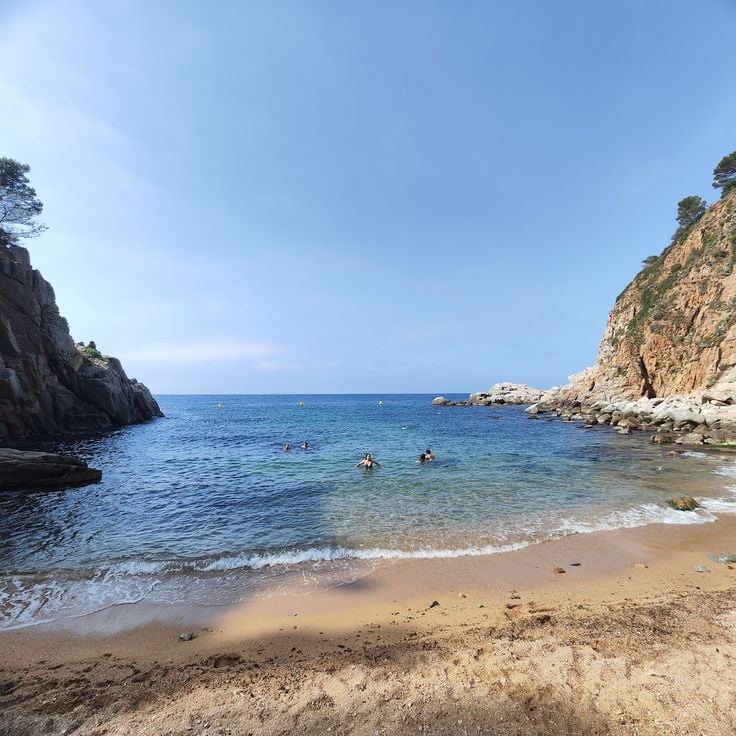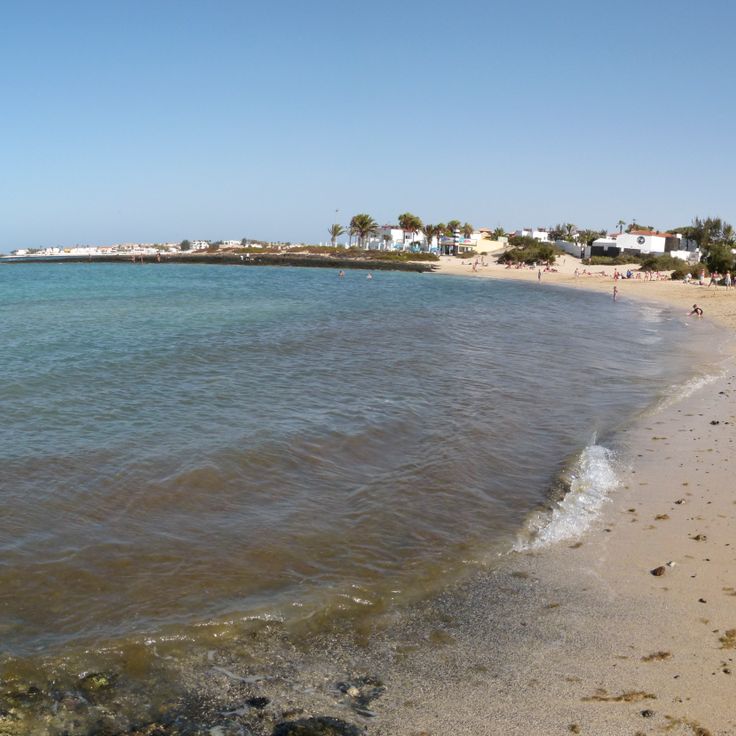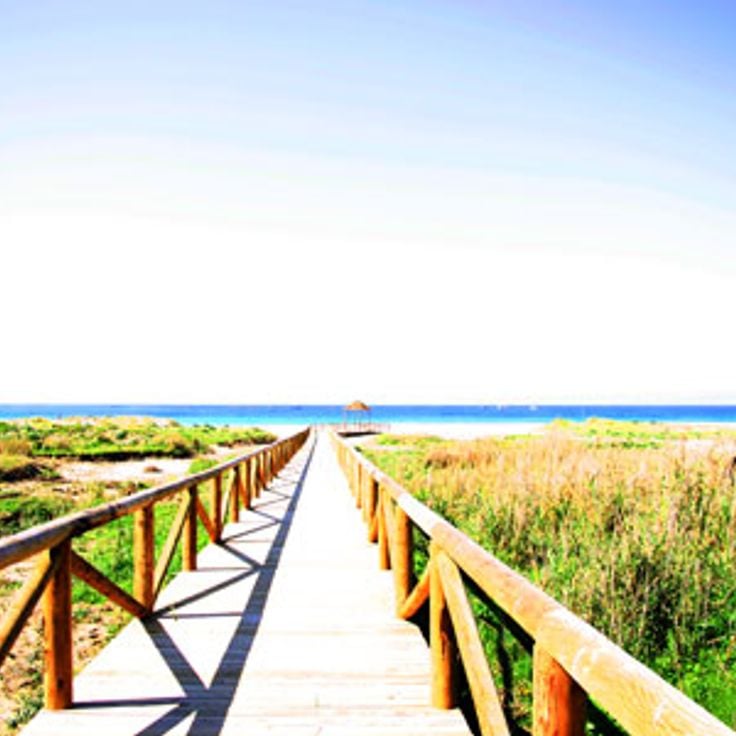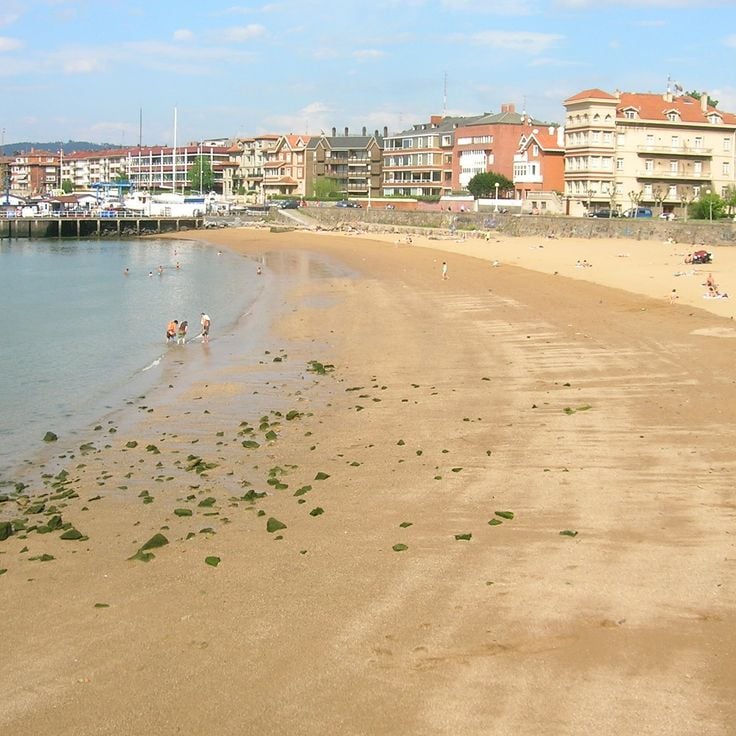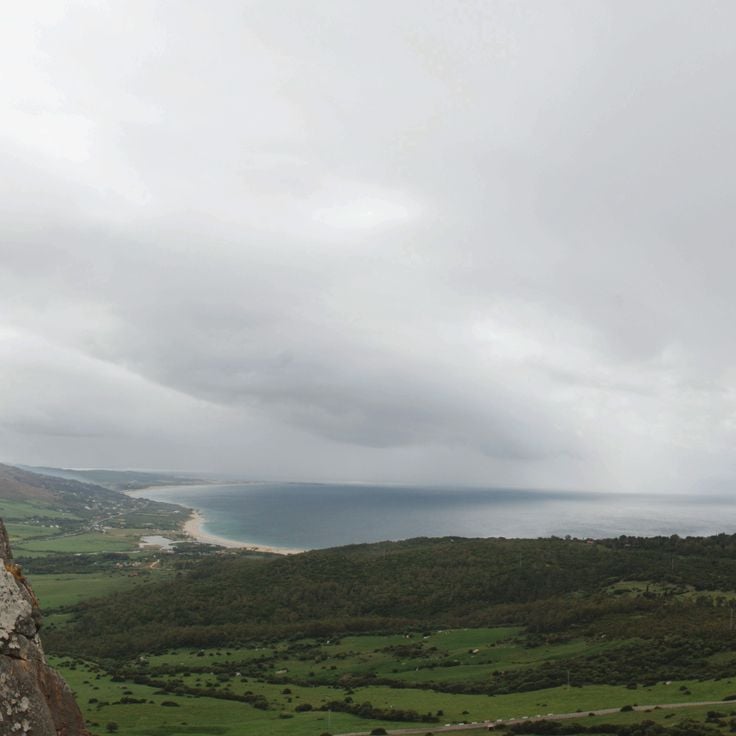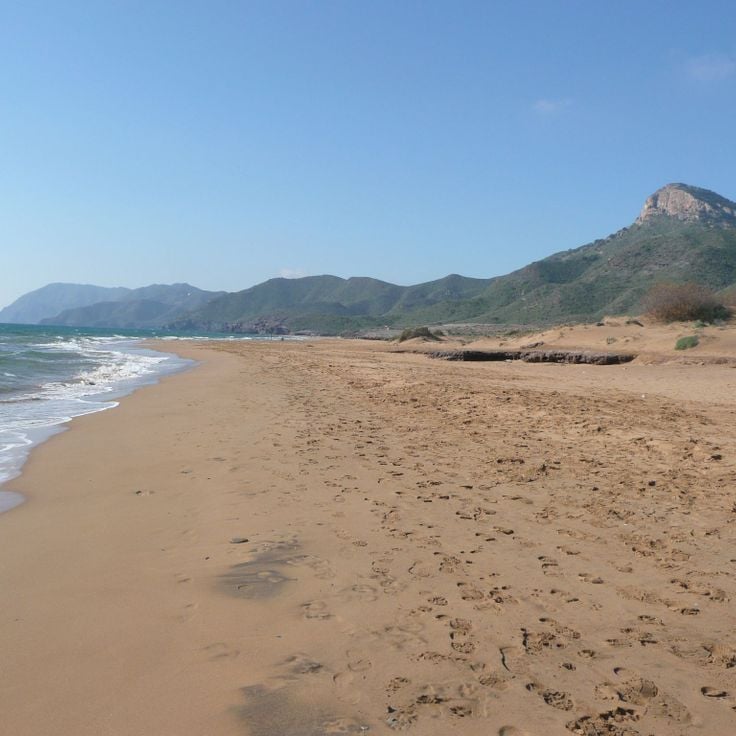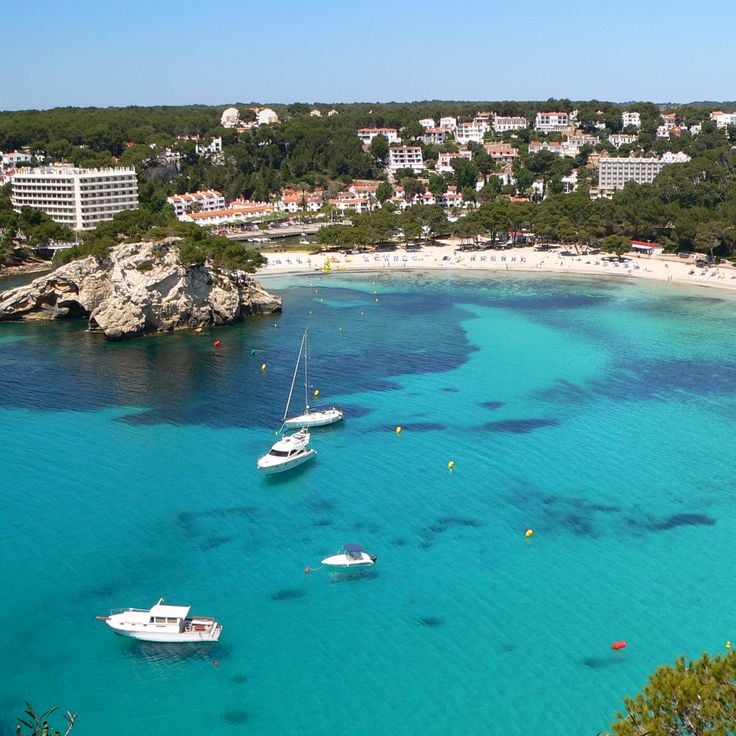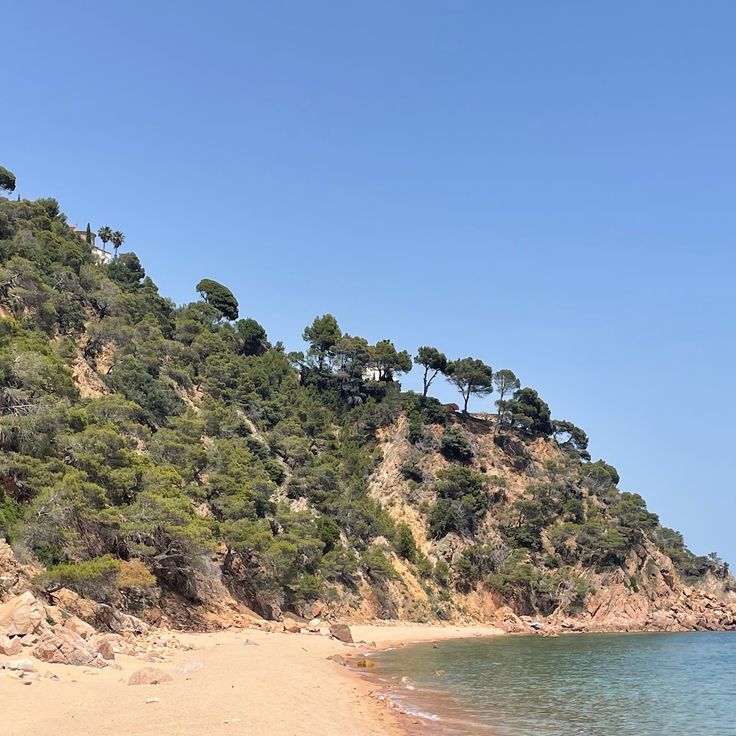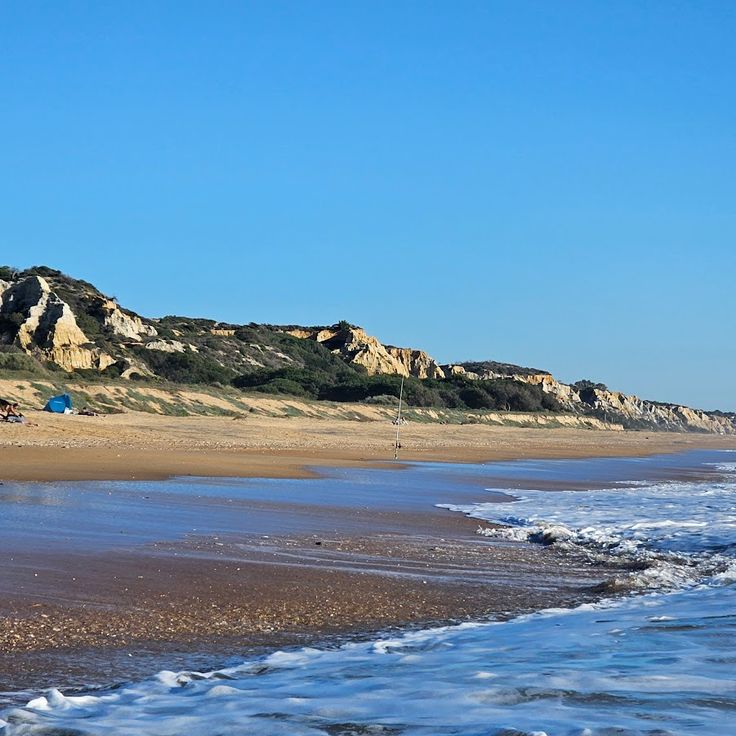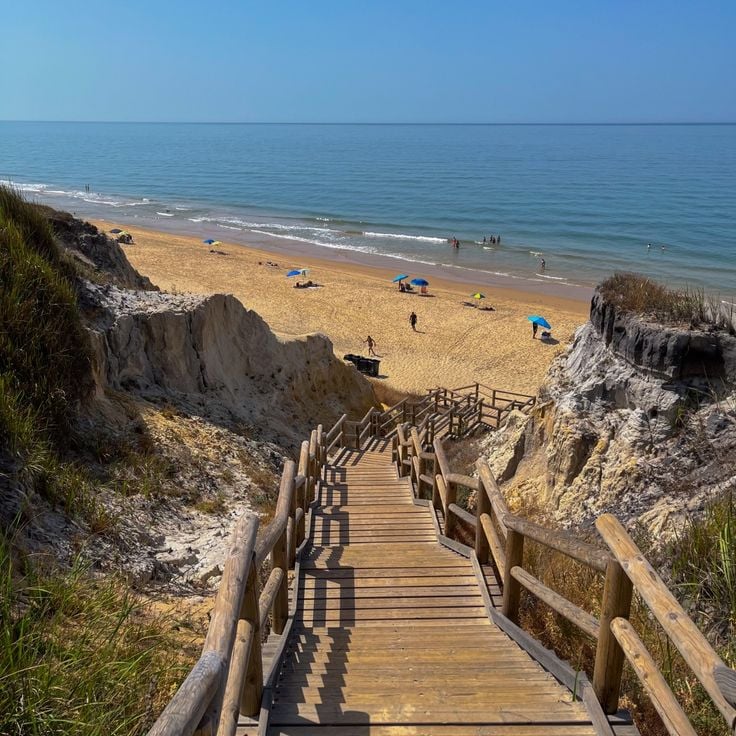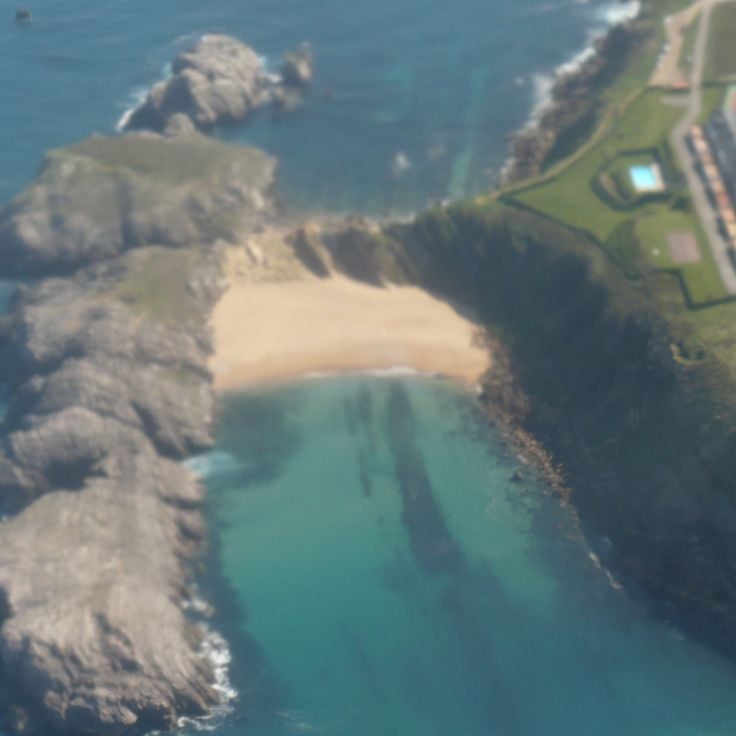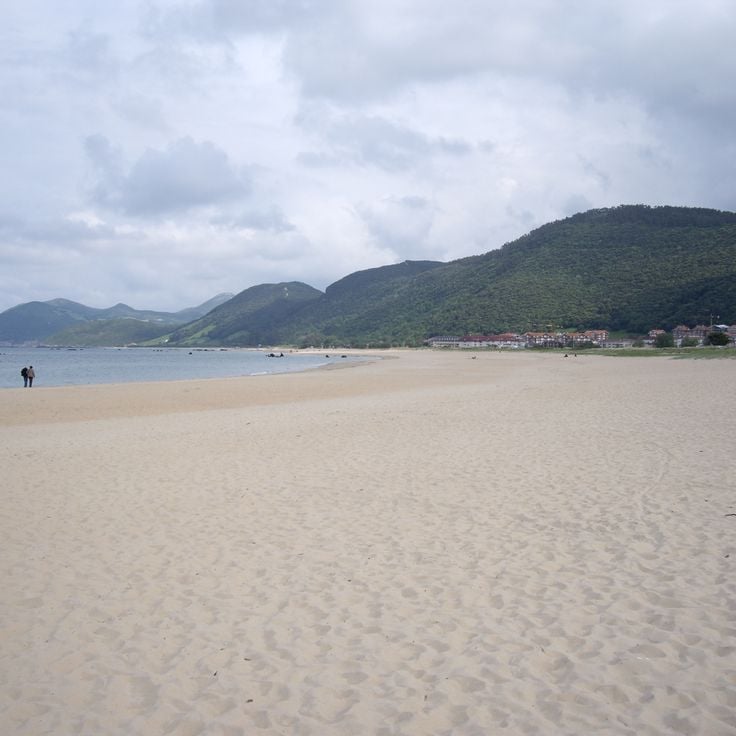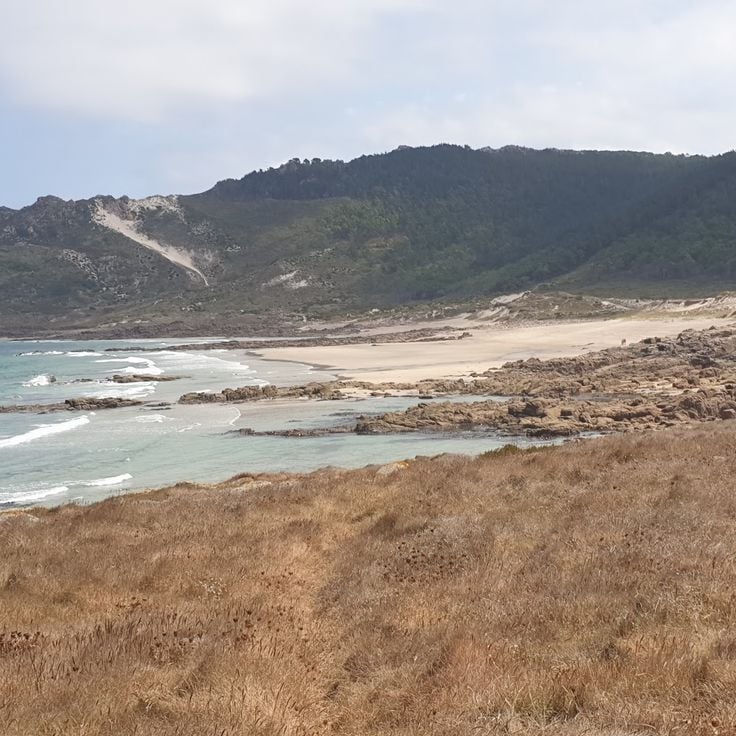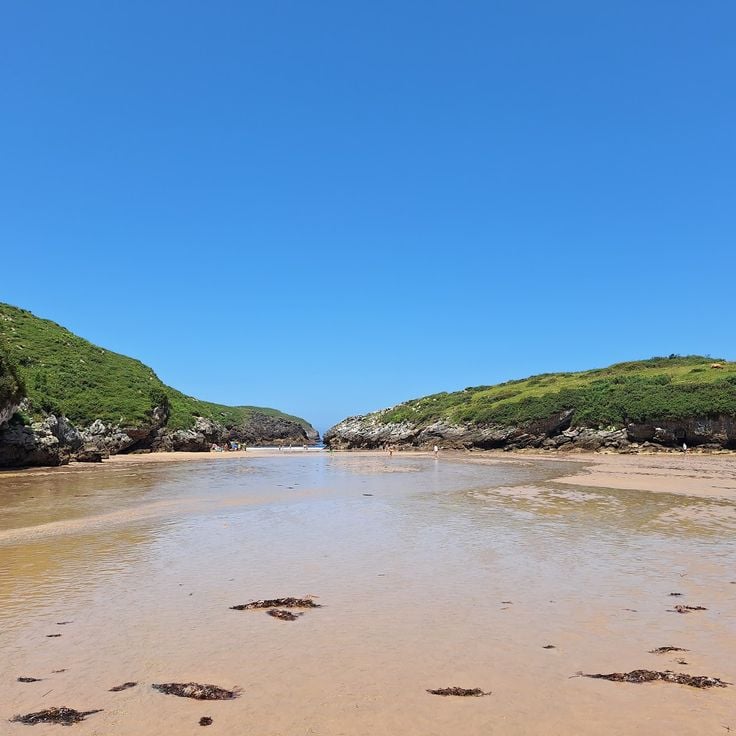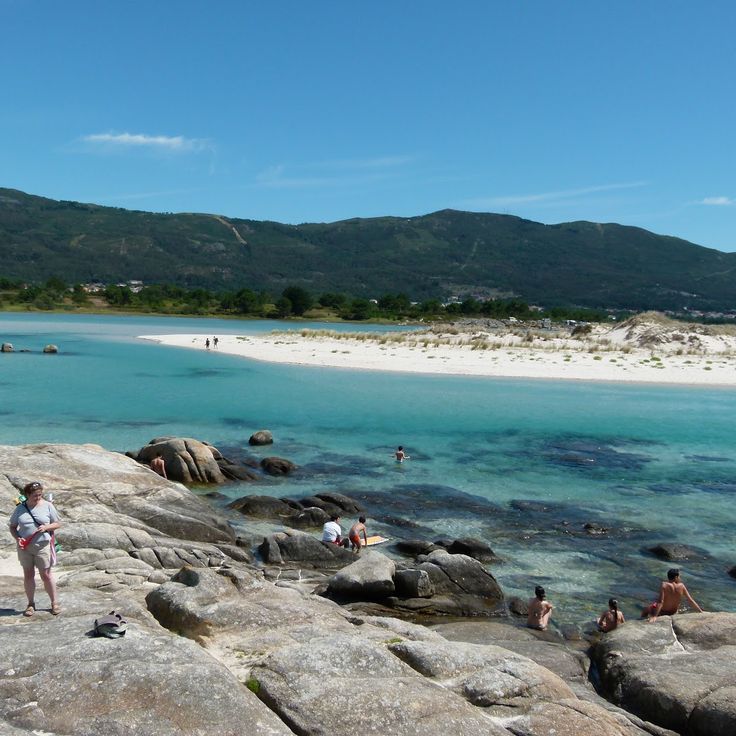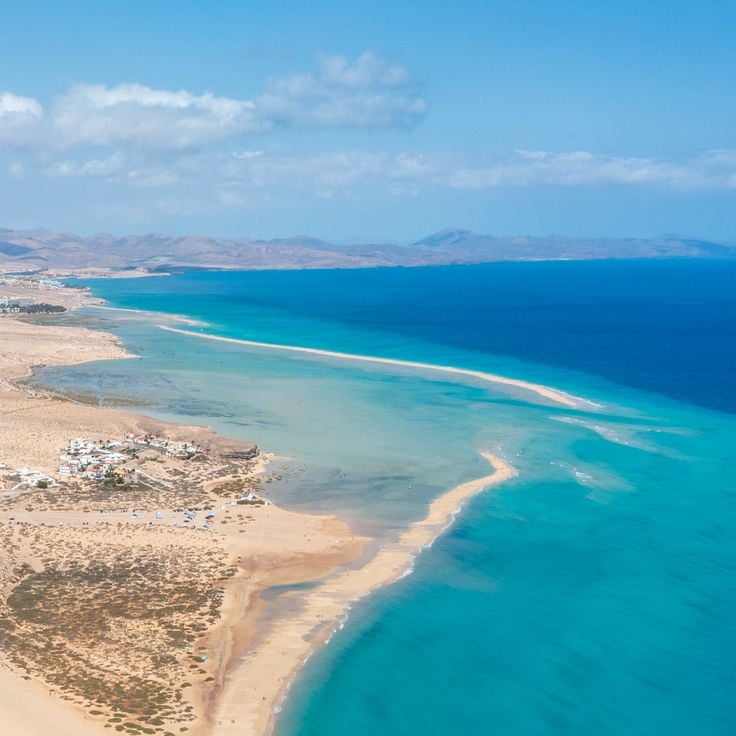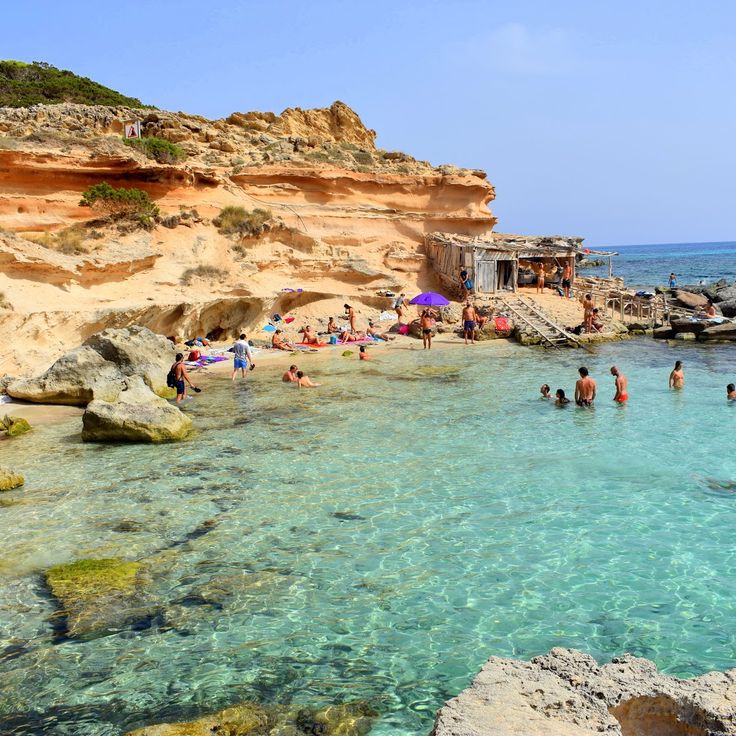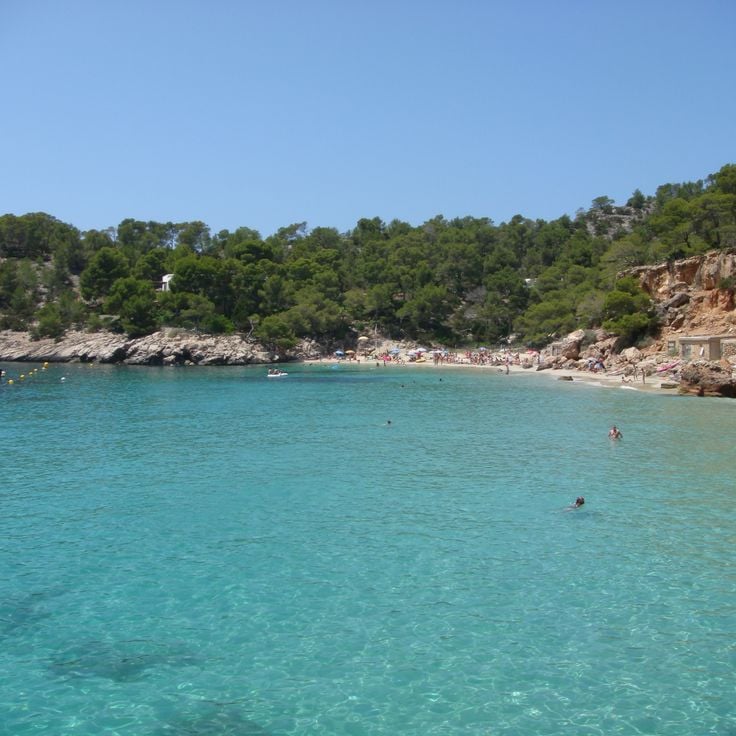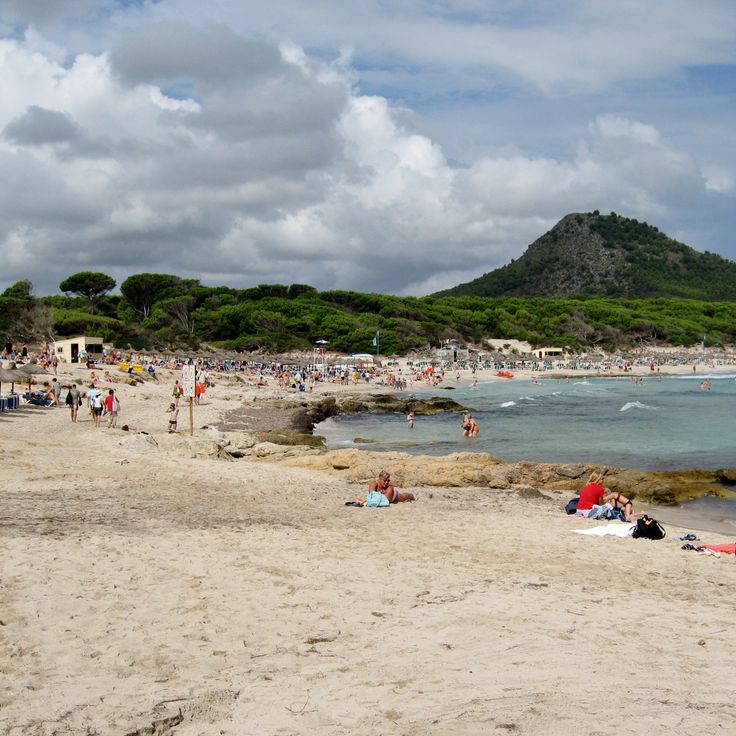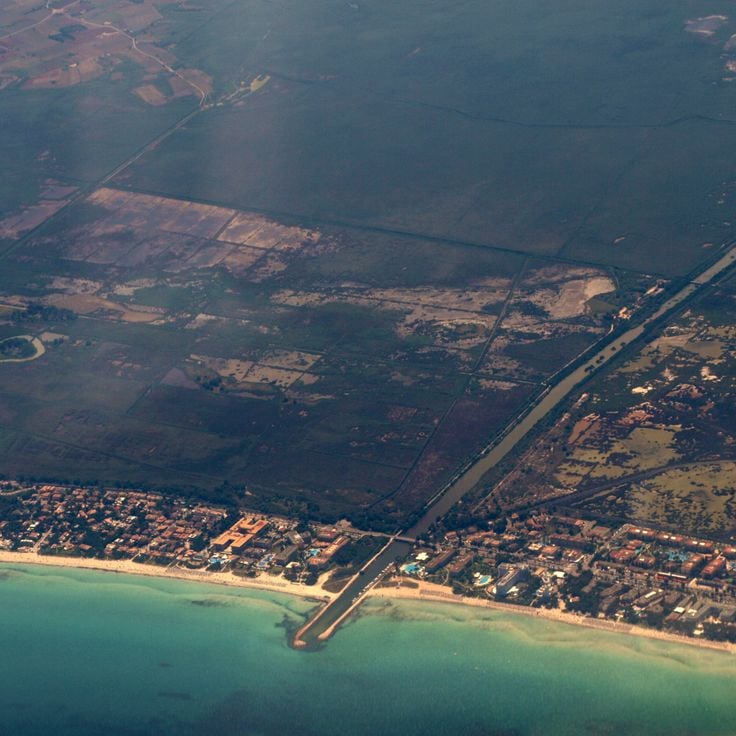Spain has more than 8,000 kilometers of coastlines home to hundreds of beaches with diverse characteristics. The Mediterranean, Atlantic, Balearic Islands, and Canary Islands feature contrasting marine scenery: coves sheltered between cliffs, extensive sandy areas, urban beaches, and protected natural zones. Each coastal region has developed its own identity influenced by local geology and climate. The Balearic Islands include bays like Cala Macarella in Menorca or Ses Illetes in Formentera, where white sand contrasts with clear Mediterranean waters. The Canary Islands display volcanic landscapes, with the Maspalomas dunes on Gran Canaria stretching over 6 kilometers, or Lanzarote’s red cliffs framing Playa del Papagayo. Along the Andalusian coast, the Cabo de Gata Natural Park houses Mónsul Beach with its black volcanic formations, while Bolonia near Tarifa features a 4-kilometer-long beach with Roman remains. The northern coast presents a different scene: La Concha urban beach in San Sebastián forms a 1.5-kilometer arc, the limestone cliffs of Asturias protect Playa del Silencio, and the Cíes Islands in Galicia are part of a marine national park.
Cala Macarella sits on the southern coast of Menorca, forming a sheltered cove between steep limestone cliffs. Access is via a walking trail through pine forest. The fine white sand stretches approximately 100 meters in length. The clear turquoise water is suitable for swimming and snorkeling. The beach has limited facilities with a small beach bar operating during summer months. The smaller sister cove of Cala Macarelleta is located nearby.
Playa de Mónsul extends along the coast of Cabo de Gata Natural Park in Almería province. The grey sand of volcanic origin is framed by dark rock formations created by volcanic activity. The area forms part of a protected zone where the natural vegetation of the Andalusian semi-desert is preserved. The beach is accessible via an unpaved road and offers limited tourist infrastructure.
La Concha Beach stretches 1.5 kilometers along the bay of San Sebastián in the city center. The curved shape of this urban beach provides natural protection from strong waves. The fine golden sand and shallow waters make this beach suitable for families. The promenade runs parallel to the beach, connecting the old town with modern neighborhoods. Framed by Monte Urgull and Monte Igueldo, the beach sits between two prominent hills of the city.
The Îles Cíes are located off the Galician coast and form an archipelago within the Atlantic Islands National Park. The three islands of Monteagudo, Do Faro, and San Martiño are connected by sandy isthmuses. Seven main beaches line the shores, including Praia de Rodas with its fine sand and turquoise waters. The islands are accessible only by ferry from Vigo or Baiona, and visitor numbers are limited to protect the natural environment. Hiking trails wind through Mediterranean vegetation to viewpoints overlooking the Atlantic Ocean.
Cala Mesquida stretches 350 meters along a natural bay on the northeastern coast of Majorca. The beach features fine white sand backed by protected sand dunes. Part of the Llevant Natural Park, the area offers clear waters and visitor facilities during the summer months.
Playa del Silencio sits on the Asturian coast within a protected cove flanked by two rocky headlands. Limestone cliffs rise approximately 50 metres above sea level, creating a natural barrier against wind and waves. The beach is accessed via a stone staircase carved into the rock face, consisting of 120 steps. The sea here displays changing shades of green and blue depending on light conditions and season. Waves shape the light-coloured sand and pebbles along the shore. Tidal movements determine the size of the beach area, which becomes considerably smaller during high tide.
Maspalomas Beach stretches for six kilometers along the southern coast of Gran Canaria. The adjacent dunes form a sand desert that extends to the sea. The dune field covers approximately 400 hectares and is shaped by natural winds. The beach offers fine golden sand and direct access to the Atlantic Ocean. The dune landscape is protected as a nature reserve.
Playa de Bolonia extends for four kilometers along the Andalusian coast. A prominent sand dune rising 30 meters marks the eastern section of the beach. The turquoise Atlantic waters meet fine, golden sand. The archaeological remains of Baelo Claudia, a Roman settlement from the 2nd century BC, lie adjacent to the beach. This ancient town was known for fish processing and garum production. The beach sits within the Estrecho Natural Park and remains one of the least developed coastal stretches in the region.
This crescent-shaped beach lies on the southern coast of Lanzarote, enclosed by volcanic cliffs within Los Ajaches Natural Park. The protected area preserves the original coastal landscape with golden sand and turquoise waters. The cove provides natural shelter from wind and waves, while surrounding lava formations offer shade. Access is via unpaved tracks through the nature reserve. Playa del Papagayo forms part of a series of smaller coves along this coastline and ranks among the most recognized beaches on the island.
Platja de Ses Illetes stretches 450 meters along the northern tip of Formentera, located on a narrow peninsula between the Mediterranean Sea and the protected waters of Ses Salines Natural Park. This beach features fine white sand and turquoise, shallow waters that extend several meters out, suitable for swimming. Natural dunes with Mediterranean vegetation line the shore, contributing to the coastal ecosystem protection. The beach provides basic facilities including umbrella rentals and sanitary installations. Accessible by boat or via an unpaved road from April to October, Platja de Ses Illetes attracts visitors seeking the quiet environment and natural setting of the smallest inhabited Balearic island.
The beaches of Lekeitio stretch along the coast of this Basque fishing town and are divided into two sections by the mouth of the Lea River. Isuntza Beach lies west of the river mouth and offers fine sand with access to San Nicolás Island at low tide via a walkable causeway. Karraspio Beach is located to the east and is framed by rocky outcrops. Both beaches provide basic facilities and are overlooked by the historic old town.
Playa de la Victoria stretches for 2.5 kilometers along the Atlantic coast of Cádiz. This urban beach offers fine golden sand and is lined by a wide promenade suitable for walks and sports activities. The beach provides showers, toilets, and lifeguards during the summer season. Along the promenade, numerous restaurants, bars, and sports facilities can be found, including volleyball courts and fitness areas. The shallow waters make the beach suitable for families. Infrastructure includes bicycle paths and access to public transportation.
Praia das Catedrais is located on the Galician coast along the Cantabrian Sea. This coastline features rock arches formed by erosion that become visible at low tide. The arches reach heights of thirty meters and extend along a beach section spanning over one kilometer. Access to the beach area with rock formations depends on tides and requires permits during peak season. The geological structures consist of slate and sandstone, shaped over thousands of years by wind and waves.
Playa de Es Trenc stretches for two kilometers along the southern coast of Mallorca, maintaining its natural character without tourist infrastructure. The fine white sand and the dunes behind form a protected coastal area. The clear water and shallow entry make this stretch of beach popular with families. The surroundings consist of salt flats and Mediterranean vegetation that belong to the landscape of southern Mallorca.
Plage de Bogatell stretches for 640 meters along the coastline of Sant Martí district in eastern Barcelona. This beach section was created as part of the redevelopment for the 1992 Olympic Games and features volleyball courts, table tennis tables, and an outdoor fitness area. Lifeguards monitor the swimming zone during the summer season, and accessible pathways allow people with reduced mobility to reach the water. Several restaurants and beach bars line the promenade, offering Mediterranean cuisine and refreshments.
Playa de Pechón stretches along the Cantabrian coast for two hundred and fifty meters of fine sand. At low tide, visitors can walk to the rocky islet that marks the western edge of the cove. The sea forms a sheltered bay between steep cliffs, with access to the beach via staircases. The surrounding landscape displays the characteristic green vegetation of northern Spain, with meadows extending to the cliff edges.
Cala Salada is a sheltered cove on the northwest coast of Ibiza, characterized by its clear turquoise waters and distinctive reddish sand. The beach is framed by pine forests and rocky cliffs that provide natural shade. Stretching approximately 80 meters, the shoreline slopes gently into the sea. A small beach bar offers refreshments to visitors. Access is via a winding road from Sant Antoni de Portmany, followed by a short walk down to the beach. The smaller neighboring cove, Cala Saladeta, can be reached via a coastal path.
La Granadella is a pebble beach on the Jávea coast, surrounded by white limestone cliffs and pine forests. The clear waters and rocky seabed attract snorkelers and divers. The beach sits in a sheltered cove south of Cap de la Nau. A coastal path connects the bay with neighboring beaches. Facilities include a beach bar and boat rental. Restrooms and a car park are available. Access is via a road with several viewpoints along the way.
Cala Codolar is a small cove located on the coast of Tossa de Mar. The beach consists of grey and black pebbles of volcanic origin. Pine trees surround the cove and provide natural shade. The calm waters are suitable for swimming and snorkeling. The cove sits away from the busier beaches in the area. A narrow path leads down to the beach from the coastal trail. The natural setting remains largely undeveloped.
Corralejo Beach stretches for several kilometers along the northern coast of Fuerteventura within the Corralejo Dunes Natural Park. The fine white sand consists of crushed marine shells and coral. Trade winds generate consistent waves that make this beach a popular location for windsurfers and kitesurfers. The adjacent sand dunes form a protected landscape with native vegetation. Multiple beach access points lead from Corralejo town to different sections of the shore. Restaurants and shops are within walking distance in the northern area.
Zahara Beach extends for six kilometers along the Andalusian Atlantic coast between Barbate and Caños de Meca. The fine white sand and consistent westerly winds attract surfers and kitesurfers. The village of Zahara de los Atunes developed from a historic tuna fishing center and still preserves remnants of the old Chanca, a 16th-century tuna processing facility. The dunes behind the beach form part of a protected natural area.
Playa Las Arenas extends for 2 kilometers along Valencia's coastline, combining fine sand with urban infrastructure. The wide beachfront promenade runs past numerous restaurants, cafés and palm trees. The beach provides complete facilities including showers, lifeguards and accessibility for people with reduced mobility. Direct connection to the city center allows easy access by public transport.
Playazo de Rodalquilar stretches for 400 meters within the Cabo de Gata-Níjar Natural Park in Almería province. This coastal section sits in an area of volcanic origin, where dark rock formations line the shore. The clear water provides good visibility of the seabed. The bay has remained free from dense development due to its location within the protected area. Access is via an unpaved road from the village of Rodalquilar. The beach consists of a mixture of sand and pebbles. Abandoned gold mines from the 20th century can be found in the surrounding area.
Cala del Moraig is a small cove on the coast of Benitachell, consisting of sand and pebbles and framed by steep limestone cliffs. The turquoise water invites swimming, while the nearby sea caves, including the well-known Cova dels Arcs, provide a popular destination for divers and snorkelers. Access is via a paved path with several steps through the rock formations. The sheltered location ensures calm water conditions, making the cove particularly suitable for families.
Valdevaqueros Beach stretches for four kilometers along the southern tip of Spain, where the Mediterranean Sea meets the Atlantic Ocean. The wide sandy shore is backed by natural dunes that form a protected coastal landscape. Consistent winds from the east and west make this beach a training ground for kitesurfers and windsurfers from various countries. Several surf schools offer lessons and equipment rental throughout the year. The beach features beach bars and parking areas within the dunes.
Calblanque Beach stretches along the coastline of a protected nature reserve within the Calblanque, Monte de las Cenizas y Peña del Águila Regional Park. The bay features fine golden sand and turquoise waters, surrounded by Mediterranean vegetation including palms, thistles, and endemic plant species. Marked hiking trails wind through the dunes and along the cliffs overlooking the Mediterranean Sea. Access is via unpaved roads, and there are no tourist facilities on site.
Plage de Las Teresitas extends 1.5 kilometers along the northeastern coast of Tenerife. The light-colored sand was imported from the Sahara Desert and contrasts with the island's volcanic landscape. An artificial breakwater construction protects the swimming area and ensures calm waters. Palm trees line the promenade behind the beach, which features multiple access points. This beach is located about seven kilometers north of Santa Cruz de Tenerife and belongs to the village of San Andrés.
Cala Galdana is a semicircular bay on the southern coast of Menorca, framed by white limestone cliffs. The shallow waters of this beach allow visibility of the seabed even at a distance from the shore. The bay features a wide sandy beach that slopes gently into the sea, making it suitable for families with children. The surrounding cliffs provide shelter from strong winds and contribute to the clarity of the water.
Cala del Senyor Ramon is a small cove on the Costa Brava, nestled between limestone cliffs and pine forests. The waters of this cove display intense shades of blue and turquoise, while the beach consists of fine golden sand. The natural setting provides shelter from winds and creates calm swimming conditions. Access is via a coastal path from Tossa de Mar, which makes this cove a less frequented bathing spot.
This cove sits on the Costa Brava between rock formations and Mediterranean vegetation. Cala Treumal provides sheltered access to the sea with clear water and a sandy area surrounded by pine trees and low shrubs. The natural arrangement of rocks protects the cove from strong winds and creates calm conditions for swimming. The beach is accessible via a coastal path or stairway and attracts visitors seeking a quieter alternative to the larger beaches in the area.
Playa de Castilla extends for several kilometers along the Atlantic coast within Doñana National Park. The fine white sand is bordered by an extensive dune system that rises behind the beach. Pine forests with umbrella pines form a natural transition between the dunes and the inland areas. This coastal landscape is part of a protected area that provides diverse habitats for numerous bird species. Access is via unpaved paths through the dunes. The sea here often displays strong currents and high waves.
Playa Cuesta de Maneli is a natural Atlantic beach within Doñana Natural Park, reached by a wooden staircase of 137 steps. The beach sits between ochre sandstone cliffs that rise several meters and give the coastline its distinctive coloring. The waters provide conditions suitable for swimming, with wave patterns that vary according to weather conditions. The surrounding area features pine forests that extend to the cliff edges. Access begins from a parking area that leads to the descent into the cove. The beach stretches several hundred meters of fine sand and attracts visitors exploring the natural environment of the protected area. The setting remains relatively undeveloped, maintaining the natural character of this section of the Huelva coast. Facilities are minimal, reflecting the conservation priorities of the park.
Playa Somocuevas extends between two limestone cliffs on the Cantabrian coast. The golden sand beach provides access to the Cantabrian Sea. The surrounding cliffs form part of the Dunas de Liencres Natural Park. Several marked hiking trails run along the coast and through the dune landscape. This beach is located approximately five kilometers west of Santander and can be reached via a road through the natural park.
Playa de Trengandin extends for four kilometers along the Cantabrian coast. Natural dunes and maritime pines line the fine sandy beach. The waves and currents attract surfers of various levels. Several access points lead from the town center of Noja to the beach. Water quality is monitored regularly. Parking areas are located near the main access points. The beach provides lifeguard services and sanitary facilities during summer months.
Playa do Gulpiyuri is an unusual inland formation on the Asturian coast. This forty-meter sandy beach sits approximately one hundred meters from the Cantabrian Sea and connects to the ocean through underground passages. Seawater flows through limestone caves and fills this natural basin with each tide. The beach occupies a depression between fields and is surrounded by cliffs. This geological formation developed through the erosion of coastal rocks over thousands of years.
Praia do Trece stretches for two kilometers along the Galician coast, offering fine white sand protected by natural dunes. The Atlantic waves provide consistent surfing conditions that attract wave riders throughout all seasons. The beach sits in a relatively undeveloped setting, allowing for extended walks along the water. The dune system contributes to coastal protection and forms a habitat for various plant species.
Playa de Poo occupies a bay on the Asturian coast, approximately two kilometers east of Llanes. Gray limestone cliffs frame the golden sand beach, which reaches about 100 meters in width at low tide. The water remains shallow for several meters, facilitating swimming. Rock formations at both ends create natural pools during low water. A parking area is located 200 meters above the bay, from where a path leads down to the beach.
Praia de Carnota stretches for seven kilometres along the Galician Atlantic coast and ranks among the longest beaches in the region. The fine light sand is bordered by a protected dune system that serves as a natural habitat for various plant species. The wooded mountains of the Serra de Barbanza rise in the background, providing a green frame to the bay. The beach lies away from major tourist centres, preserving its original character. At low tide, the sandy area expands considerably and reveals rocky outcrops.
Playa Sotavento stretches for nine kilometers along the southeastern coast of Fuerteventura. At high tide, a shallow lagoon forms between the beach and an offshore sandbar, suitable for swimming. Trade winds create favorable conditions for windsurfing and kitesurfing. International competitions in these disciplines take place here regularly. Light sand and turquoise water characterize this coastal section, which spreads across several beach segments.
This small cove on the southeastern coast of Formentera features a natural setting and a quiet location. Calo Des Morts sits between distinctive reddish rock formations that contrast with the light-colored sand. The clear waters are suitable for swimming and snorkeling. Access is via a wooden staircase that descends from the clifftop. The cove is relatively small and offers limited shade, so an early visit is recommended. Parking is available near the access road.
Cala Saladeta is a small cove on the western coast of Ibiza, characterized by its natural setting and reddish-toned sand. The water remains shallow for several meters, making this cove suitable for families with young children. The cove sits within a rocky landscape dotted with pine trees and can be reached on foot from the neighboring Cala Salada. There are no permanent facilities on site, so visitors should bring food and sun protection.
Cala Agulla is located on the northeast coast of Mallorca in the municipality of Capdepera. This bay features a 600-meter sandy beach framed by rocky cliffs. Behind the beach lies a protected forest area with Mediterranean pine trees. The shallow waters are suitable for swimming and various water sports activities are available. During summer months, lifeguards, showers and sanitary facilities are provided. Restaurants and cafés can be found in the immediate vicinity of the beach.
Playa de Muro stretches for six kilometers along Mallorca's northern coast within the S'Albufera Natural Reserve. The fine white sand forms a wide beach bordered by natural dunes and Mediterranean vegetation. Shallow, clear waters make this coastal section particularly suitable for families. The western part lies directly adjacent to the nature park and maintains its original character, while the eastern area offers developed tourist facilities. A promenade connects different beach sections with restaurants and equipment for water sports.
Similar collections
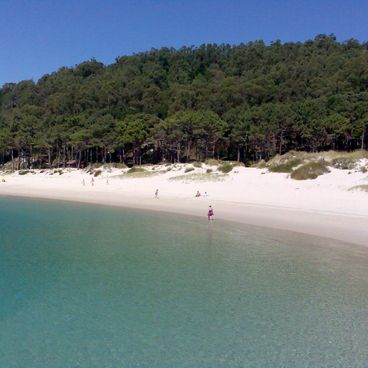
Beaches in Spain: Canary Islands, Balearic Islands, Cantabria
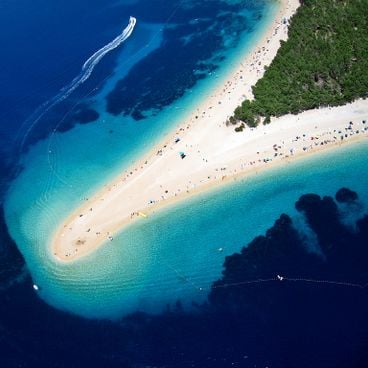
Secret beaches in Europe: secluded shores, natural formations, coastal trails
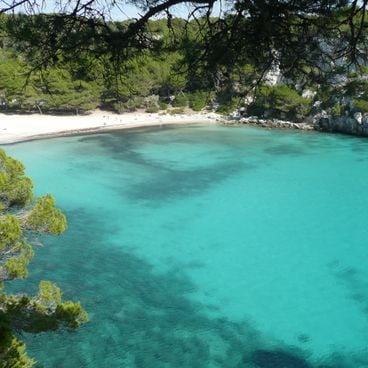
Menorca beaches from red to white sand
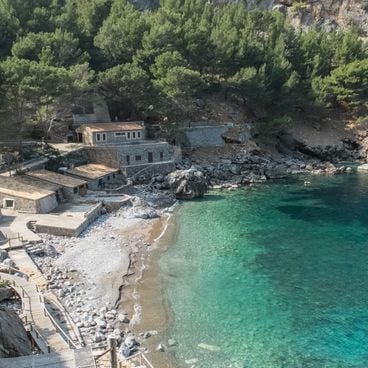
What to do in Majorca: natural sites, historic heritage, and activities
